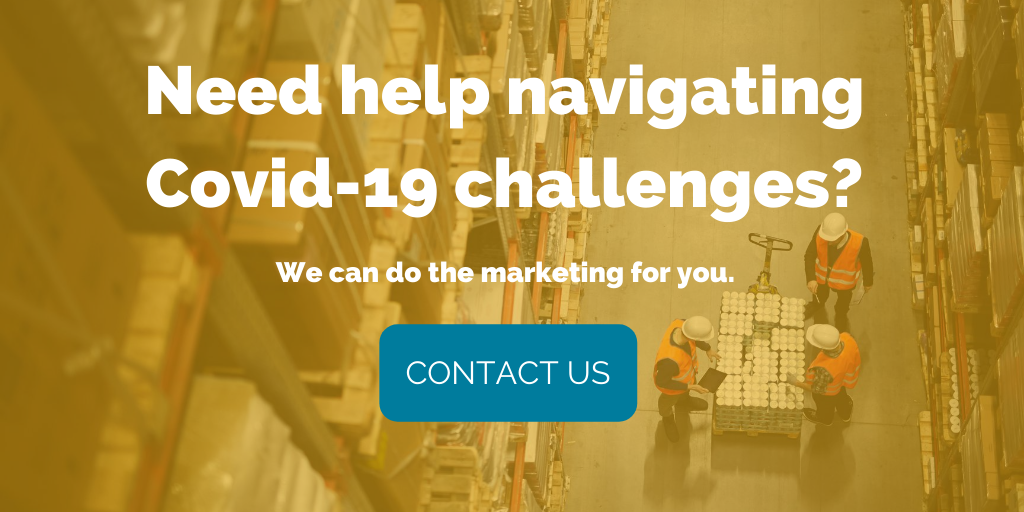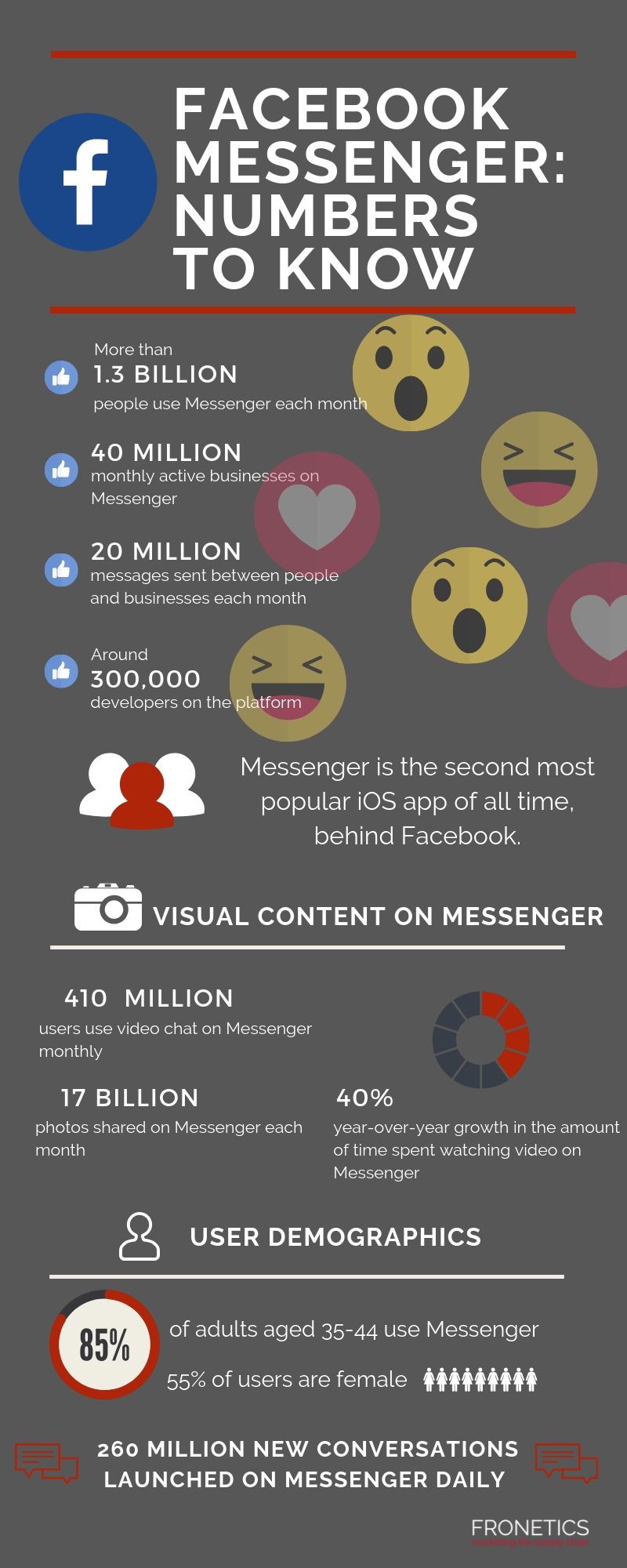
by Elizabeth Hines | Jan 16, 2019 | Blog, Content Marketing, Logistics, Marketing, Supply Chain
Updated February 4, 2025
Digital marketing for the supply chain has become necessary to position your company to not only be found online, but also to be researched and to be compared to your competition.
Highlights:
- Digital marketing uses your website, related social media, and other online industry channels to showcase your industry knowledge and experience.
- Thought leaders are the informed trusted sources in their field of expertise.
- Supply chain and logistics industries need content marketing to achieve confidence and relationship-building with buyers.
Today’s B2B buyers are researching, evaluating, and coming to conclusions about companies without a single contact with a team member or salesperson.
This kind of B2B buying landscape requires cutting edge marketing strategies to showcase nut-and-bolt industries that have survived without them for many years.
Digital marketing for the supply chain
Digital marketing for the supply chain uses your website, related social media, and other online industry channels to showcase your industry knowledge and experience (rather than trying to convince people of it with a marketing message).
With inbound digital marketing, you publish relevant, informative information to adds value to every stage of a potential customer’s buying journey.
It is the content that you publish that walks them through the initial stages of the sales process.
What should you publish? A good content marketing strategy is about understanding the questions and concerns that are particular to your customer base, and offering quality information and analysis that answers those needs.
Showcasing thought leadership through digital marketing
Discovering and meeting the needs of your customers that go beyond your products and services will catapult you in their minds as a knowledgeable, helpful “thought leader” in your industry.
Thought leaders are the informed trusted sources in their field of expertise. They have innovative ideas, can showcase their thinking, and can replicate their successes again and again.
Consider it: Your business has so much more to offer than its primary product or service. You have a team of people with a tremendous aggregate of experience, expertise, and perspectives.
Allowing your customers this sort of access to your team’s experience and knowledge provides them with tremendous value outside the sales funnel, which builds trust and cultivates lasting, fruitful relationships.
Why digital marketing?
In this B2B buying landscape, supply chain and logistics industries need content marketing to achieve a level of confidence and relationship-building with buyers that used to come from face-to-face meetings. Potential and current customers will view your company as a valuable resource for everything related to not only your products and services but to the industry as a whole.
No time to execute?
The downside? Content marketing requires significant time, labor, and resources, and it can take quite some time to start reaping benefits. Feeling overwhelmed and like you and your team can’t possibly add on more marketing? Outsourcing certain key marketing tasks allows insourcing your core competencies while delegating specialized tasks to external experts.
This post originally appeared on EBN Online.
Related posts:

by Fronetics | Oct 11, 2018 | Blog, Content Marketing, Current Events, Logistics, Marketing, Social Media, Supply Chain
Consider these chatbot platforms for supply chain operations that can help you create artificial intelligence bots to interact with your prospects.
Chatbots are on the lips of every marketer these days hoping to automate some of their processes. These artificial intelligence computer programs are designed to conduct conversations, simulating how a human would interact. If you haven’t already, check out this introduction to chatbots for the supply chain.
[bctt tweet=”Chatbots are on the lips of every marketer these days hoping to automate some of their processes. These artificial intelligence computer programs are designed to conduct conversations, simulating how a human would interact.” username=”Fronetics”]
There are countless options for platforms that let you create and customize chatbots. Here are the 5 most important chatbot platforms for supply chain operations to know and consider integrating into their websites.
5 chatbot platforms for supply chain operations
1. Chatfuel
Chatfuel is a great option for marketers who lack programming experience, as it does most of the hard work for you. Reportedly used by companies including MTV, TechCrunch, BuzzFeed, British Airways, and Adidas to create their chatbots, Chatfuel provides easy-to-use resources with a simple user interface that lets you create a chatbot in less than 15 minutes.
2. ChatScript
ChatScript is a four-time winner of the Loebner Prize for the most human-like artificial intelligence. While it doesn’t require advanced programming knowledge, it provides an open-source framework for developers to build and deploy chatbots.
3. Facebook Bots for Messenger
Facebook’s Bots for Messenger is a tool that allows businesses to build chatbots for Facebook’s Messenger platform (which is currently used by nearly a billion people). Its three main capabilities are its send/receive API, generic message templates, and the ability to customize the welcome screen users first see when interacting with your bot.
4. Botsify
A popular chatbot platform, Botsify lets anyone create bots easily without needing to write any code. It provides templates with a range of drag-and-drop functionalities. Additionally, it boasts human takeover ability to ensure a smooth transition from a bot to a human at the appropriate point in the sales funnel.
5. Flow XO
This platform offers the templates and tools necessary to create a talking bot, and lets you run and test functionalities with a built-in test console. Flow XO also offers a provision for you to connect with your customers over voice and chat when required in the conversation.
While email marketing continues to be a key tactic, marketing via messaging apps is becoming more and more expected. These chatbot platforms for supply chain operations offer ease, convenience, and a positive customer experience. They’re worth considering!
Related posts:


by Fronetics | Jun 9, 2020 | Blog, Content Marketing, Covid-19, Marketing, Strategy, Supply Chain
Too busy? Don’t want to invest in-house? Here are 4 prime reasons organizations opt to outsource content marketing.
No other lead generation tactic is more important to technology marketers than content assets. The new Gartner research — trade shows come in second place — shows the importance of paying heavy attention to how your organization positions itself online. If the Covid-19 repercussions left you no choice but to cut back on marketing or if you have been juggling more than ever, consider the case for outsourcing content marketing to stay competitive and excel.
At a time when some of the biggest supply chain trade shows have been either canceled or postponed, count on content assets to grow in significance. Is your organization up to the task?
In our work with both supply chain startups and multi-national corporations, we have noted a few returning reasons for outsourcing content marketing.
Do you recognize yourself or your organization in any of the following?
Outsourcing content marketing: 4 reasons organizations decide to seek outside help
Too much to do
When content marketing is the umpteenth task on an endless to-do list, the results will suffer. This scenario is particularly common among startups where everyone is wearing as many hats as possible in anticipation of the next round of funding. The haphazard approach to what is being published on social channels and on the blog does the company no favors and leaves the person in charge — frequently with limited marketing experience — feeling frustrated. Instead of letting keyword-optimized content carve out a brand niche and build website SEO, the effort goes nowhere although the will to succeed is strong.
The alternative: Partner with a content marketing agency and turn the focus on your core expertise.
No consistency
The effectiveness of content marketing relies on consistency. But being consistent is a major challenge for supply chain companies, especially when trying to recover from months of unprecedented disruption. As we explained in this post, consistency feeds SEO. Let it slip, and you lose in the online search race. In this case, sudden trade show cancelations may have forced the in-house marketing team to a quick pivot, from executing the company marketing strategy to pouring all efforts into making trade show contingency plans. Add a product launch to the mix and chances are content production will come to a standstill.
The alternative: Keep SEO humming and your online presence strong with an outsourced marketing team invested in your success.
Desire to scale but costs are too high
Needs can arise quickly. There may be a trend that a company wants to jump on or a sudden change in the business environment that warrants the need to scale up content marketing quickly. Several of our clients have sought out Fronetics because they lacked certain marketing capabilities and did not necessarily want or have the resources to make the investment in-house. That is particularly true under current circumstances when some organizations are battling budget constraints and disruption. If an organization wants to capitalize on video marketing, for instance, it can be both time-consuming and costly to train team members or go through a rigorous hiring process.
The alternative: Leverage a team out outsourced content experts to fill the gap without adding fixed costs.
Lack of analysis
The motions of content marketing are repetitive — researching, strategizing, executing, analyzing, revising — but they are so for a reason. Even the most well-intentioned content strategy can fail when an organization does not act on analytics. But for busy organizations, it is not uncommon for those last pieces of the puzzle — analyzing and revising — to be left undone.
What types of content worked well this quarter? How did the email messaging fare? What was the click-through-rate? During the past few months, when disruption ruled, it is hardly surprising if not every step was optimally performed. Yet, it can all the same be damaging to the overall success of the marketing effort if the metrics are allowed to go unnoticed for too long.
The alternative: Let content count with an outsourced marketing team that constantly needs to prove ROI.
Considering the significance of content assets, it pays to do it well. Is outsourcing content marketing right for you?

Read more:

by Fronetics | Oct 24, 2019 | Blog, Marketing, Social Media
Facebook Messenger is the latest trend in chatbots for the supply chain. Here are powerful numbers to prove why your brand needs to be active on the messaging platform.
Patience is a virtue of the past. Today’s buyers want (and expect) marketers to actively engage with them throughout the purchasing journey. And offering them generic information won’t work — they want personalized communications based on who they are, what they have purchased in the past, and what they are interested in buying. Businesses can no longer afford a one-size-fits-all communication strategy.
The focus has shifted from passive marketing to engagement, which has marketers scrambling to be everywhere, at all times, to ensure a positive customer experience. In response, we’ve seen an increase in chatbot usage in the supply chain and logistics industries. Chatbots help improve the customer experience through automated systems that emulate human conversation.
Chatbots rely on the popularity of messaging apps. And, luckily for marketers, messaging app usage is on the rise:
- There were 2.18 billion messaging app users globally in 2019. (Statista)
- At the end of 2018, 78% of the world’s smartphone users were messaging every month. (Facebook)
- By 2021, it’s predicted that the global user base for mobile messaging apps will have risen by a further 23%. (Facebook)
- People share more than 17 billion photos on messaging apps every month. (Mobile Monkey)
And though WhatsApp has the highest percentage of users worldwide, Facebook Messenger has taken over as the most popular messaging app in the U.S. With over 1.3 billion monthly users, this powerful messaging platform holds a lot of potential for marketers.
Even though marketers know that Facebook Messenger is a platform they can no longer ignore, supply chain and logistics brands have been slower to jump on board. But if you’re questioning if you should be using Facebook Messenger to engage with audiences, the answer is yes.
Supply chain businesses can use this platform to deliver content, engage with customers one on one, and offer superior personalized customer service, all of which result in high-quality relationships and leads.
Here are some staggering numbers to back up our point.

(Made with Canva)
Final thoughts
What was once thought of a teen social app, Facebook Messenger is now dominating the business world with increasing popularity and no sign of slowing down. In fact, we as a brand have found huge success using Messenger to engage with new leads. In the first 24 hours of using the platform, we were able to set up a meeting with a new prospect. That was just in the first 24 hours. This prospect turned out to be our next client, and the initial connection was all made through Facebook Messenger.
Related posts:


by Fronetics | Sep 24, 2019 | Blog
Although content is extremely important, it’s only effective if it gets in front of the right audience. Here’s everything you need to know about content distrubution.
Highlights:
- Content distribution is the act of promoting content to online audiences in multiple media formats through various channels.
- Don’t fall victim to the “spray and pray” strategy where you post every piece of content anywhere and everywhere to increase the chances of achieving your desired results.
- Kick things off by looking at how each channel you want to use matches with the audience, your goals, and the priorities outlined in your overall content marketing plan.
Video transcript:
I’m Katie Russell, a marketing strategist here at Fronetics, and today we’re going to be talking about content distribution 101.
Content distribution is a term that’s often thrown around in marketing circles without any specifics attached. Given the growing popularity of content marketing, brands run the risk of having content lost in the shuffle. Here’s what you need to know to start implementing a successful content distribution strategy.
What is content distribution?
First off, what is content distribution? Content distribution is the act of promoting content to online audiences in multiple media formats through various channels.
There are three main components in the process for enabling your brand to build (and grow) communities of loyal, engaged consumers:
- Evaluate your distribution options
- Develop and document your strategy
- Promote your content
Evaluate your distribution options
Let’s start with evaluate your distribution options. Don’t fall victim to the “spray and pray” strategy where you post every piece of content anywhere and everywhere to increase the chances of achieving your desired results. You want to make sure your content is getting in front of the right people, with the right messaging.
Whether you are new at content marketing or a seasoned expert wanting to make the biggest splash possible, you need to decide which channels make the most sense for distribution. Some channels are more appropriate for your content than others, so you want a clear understanding of the unique value proposition of each, and how strongly those benefits align with your audience, brand voice, and goals.
Develop and document your strategy
Once you’ve generated a list of the most viable distribution options, building a strategy is the next step. Kick things off by looking at how each channel you want to use matches with the audience, your goals, and the priorities outlined in your overall content marketing plan. Resources and content types will help establish your editorial strategy. Make sure to document the details of your distribution decisions, so the information can be referenced easily, updated as necessary, and shared throughout your company.
Promote your content
Simply posting your content and waiting for your ideal audience to magically discover it won’t cut it. Make sure you are:
- optimizing your content with keywords, backlinks and calls to action
- repurposing and repackage top performing content
- consider sponsored content on social media sites
Want more information on how to successfully implement a content distribution strategy? Visit us at fronetics.com.
Related posts:









